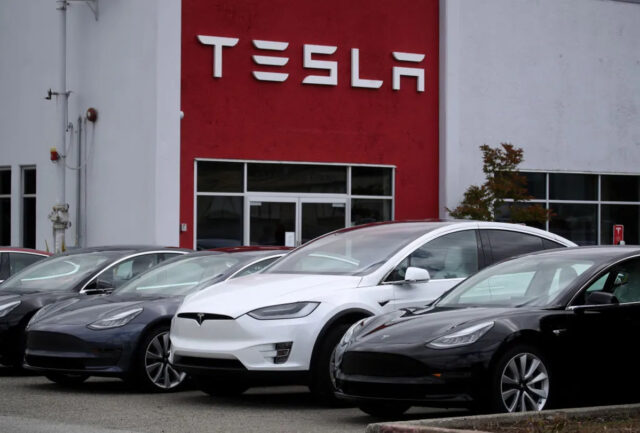
Tesla, once the undisputed leader in the electric vehicle (EV) industry, is facing a troubling sales downturn. The company reported a 13% decline in global vehicle deliveries for Q1 2025, totaling 336,681 units—significantly missing Wall Street’s forecast of 396,960 units. This marks Tesla’s lowest quarterly sales figure in three years and has raised concerns about its competitive position in the rapidly evolving EV market.
Tesla’s Production and Sales Slump
Alongside declining deliveries, Tesla’s production also fell to 362,615 vehicles, reflecting a slowdown in output. While production cuts are sometimes strategic to manage inventory, this dip suggests a potential softening of demand, logistical challenges, or even supply chain issues.
The sales drop is particularly striking in Europe, where Tesla’s market share plunged from 17.9% to 9.3% year-over-year. Countries like Germany, once a stronghold for Tesla, saw the company’s market share plummet from 16% to just 4%.
Even more concerning is that while Tesla’s European sales fell by 49% year-over-year, the overall EV market in the region grew by 28%. This indicates that Tesla is not only struggling with declining demand but also losing ground to competitors who are successfully capturing the rising EV market share.
Factors Behind Tesla’s Struggles
1. Increased Competition from Other EV Brands
Legacy automakers and emerging startups are aggressively expanding their EV offerings. Brands like BYD, Volkswagen, and Hyundai have launched competitive models with lower prices, longer ranges, and advanced features, drawing customers away from Tesla.
2. Pricing Strategy Backfire
Tesla’s frequent price cuts throughout 2024 were initially meant to boost demand, but they may have diluted brand value and created uncertainty among buyers who anticipated further discounts. Now, customers are hesitating to purchase, leading to unpredictable demand patterns.
3. Market Saturation and Consumer Fatigue
Tesla’s core markets, such as the U.S. and Europe, may be reaching a saturation point, where the majority of early adopters have already purchased a Tesla. Meanwhile, newer customers are exploring cheaper alternatives or waiting for upcoming models with better technology.
4. Negative Publicity and Quality Concerns
Tesla has faced criticism for quality control issues, delayed deliveries, and recalls related to software glitches and safety concerns. Such negative press could be eroding consumer trust and influencing purchasing decisions.
5. Weaker Demand for Expensive EVs
With global economic uncertainty and rising interest rates, consumers are hesitant to make big-ticket purchases like EVs. Many buyers are opting for cheaper gasoline or hybrid vehicles, delaying their switch to full electric models.
What’s Next for Tesla?
➡️ Can Tesla Regain Its Market Position?
To reverse this downward trend, Tesla may need to:
✔ Introduce more affordable models to attract budget-conscious buyers.
✔ Improve production efficiency to bring down costs and increase profit margins.
✔ Address quality concerns and enhance after-sales service.
✔ Strengthen its presence in emerging markets like India and Southeast Asia, where EV adoption is growing.
➡️ Impact on Tesla’s Stock and Investors
Tesla’s stock has already taken a hit following these sales numbers, and investors are concerned about its long-term growth potential. If the company fails to reverse this trend, it could lose its dominance in the EV market.
Conclusion
Tesla’s declining sales and shrinking market share are a wake-up call for the EV giant. The company must act quickly to revamp its strategy, innovate, and restore consumer confidence before competitors seize the opportunity to take the lead.



